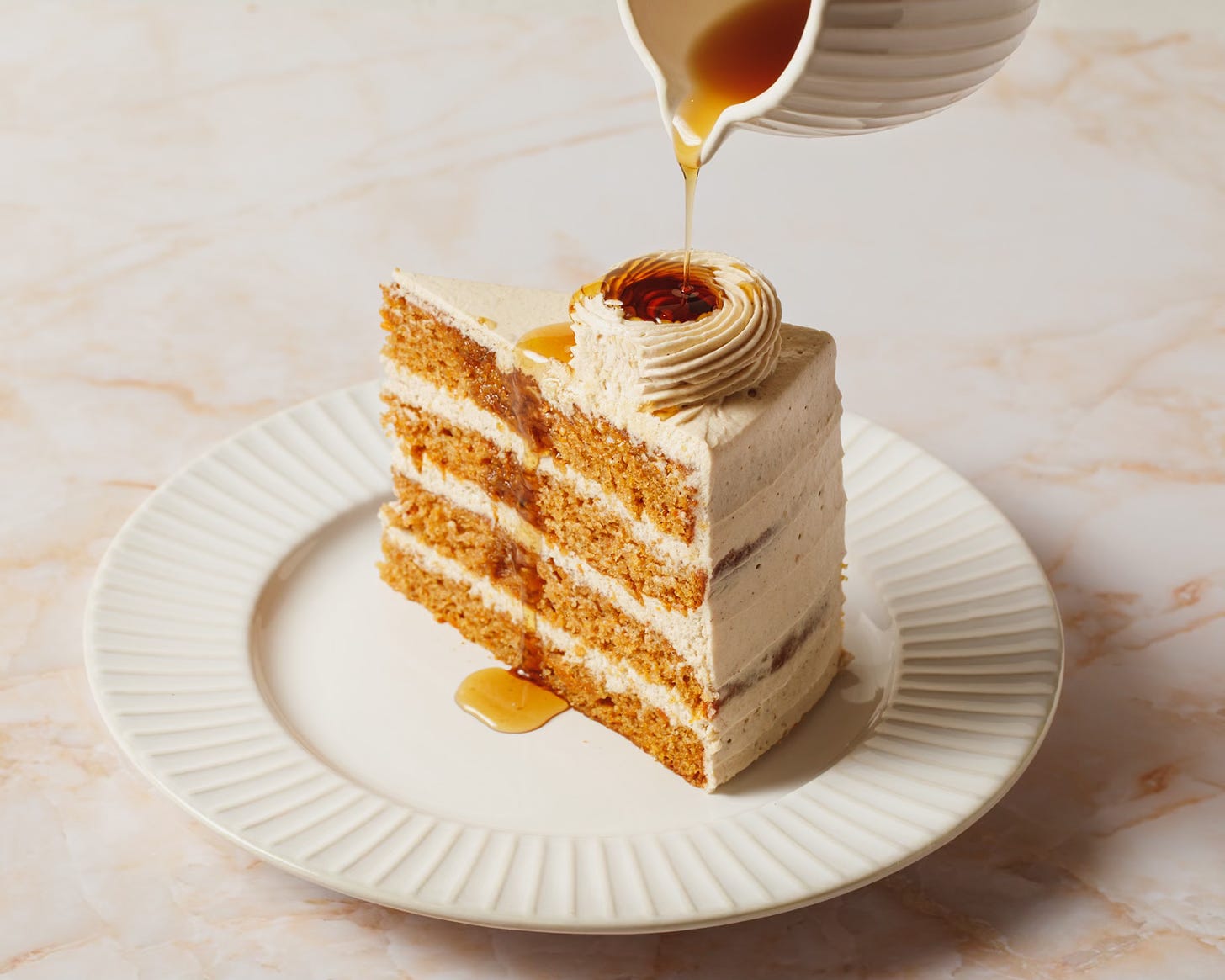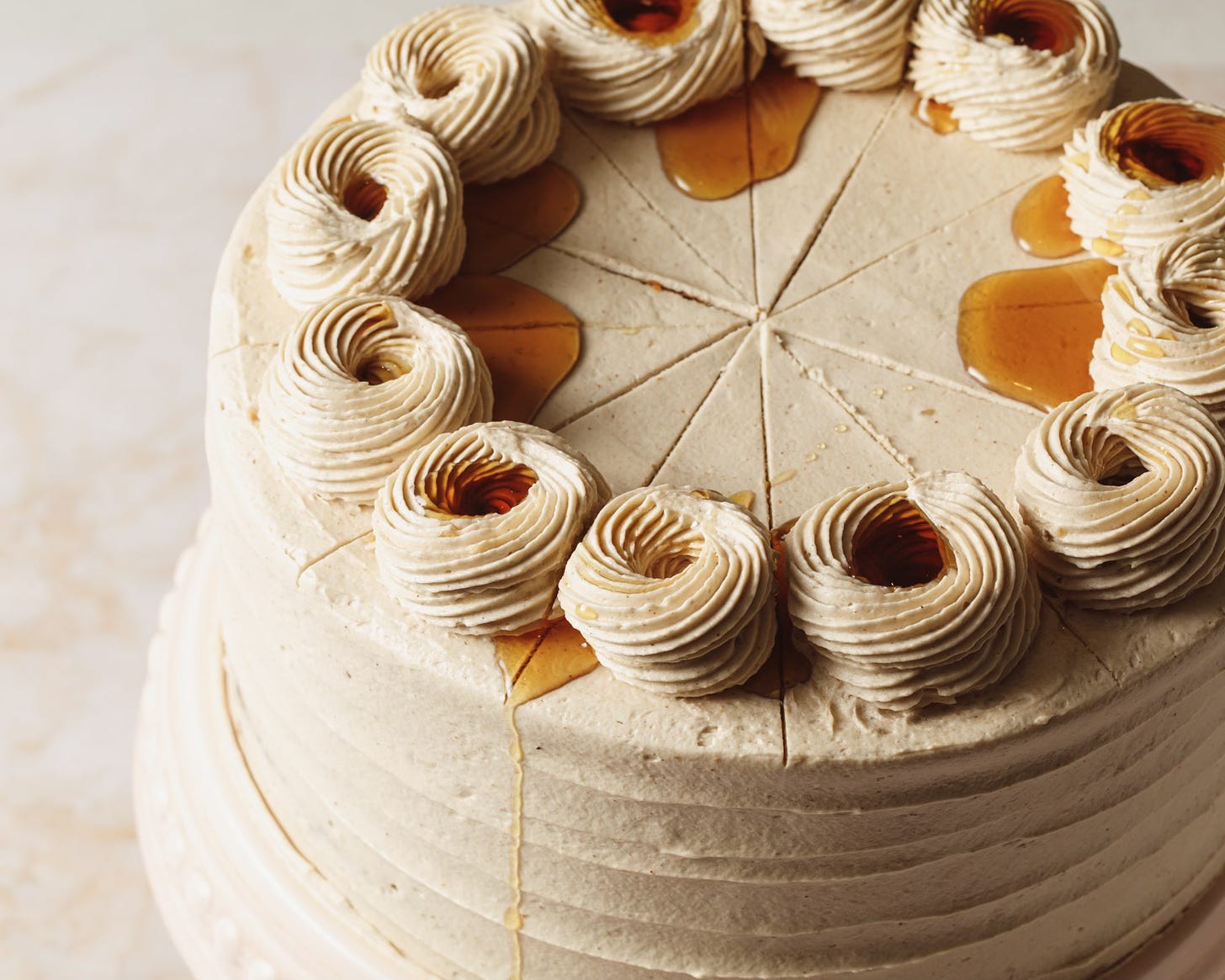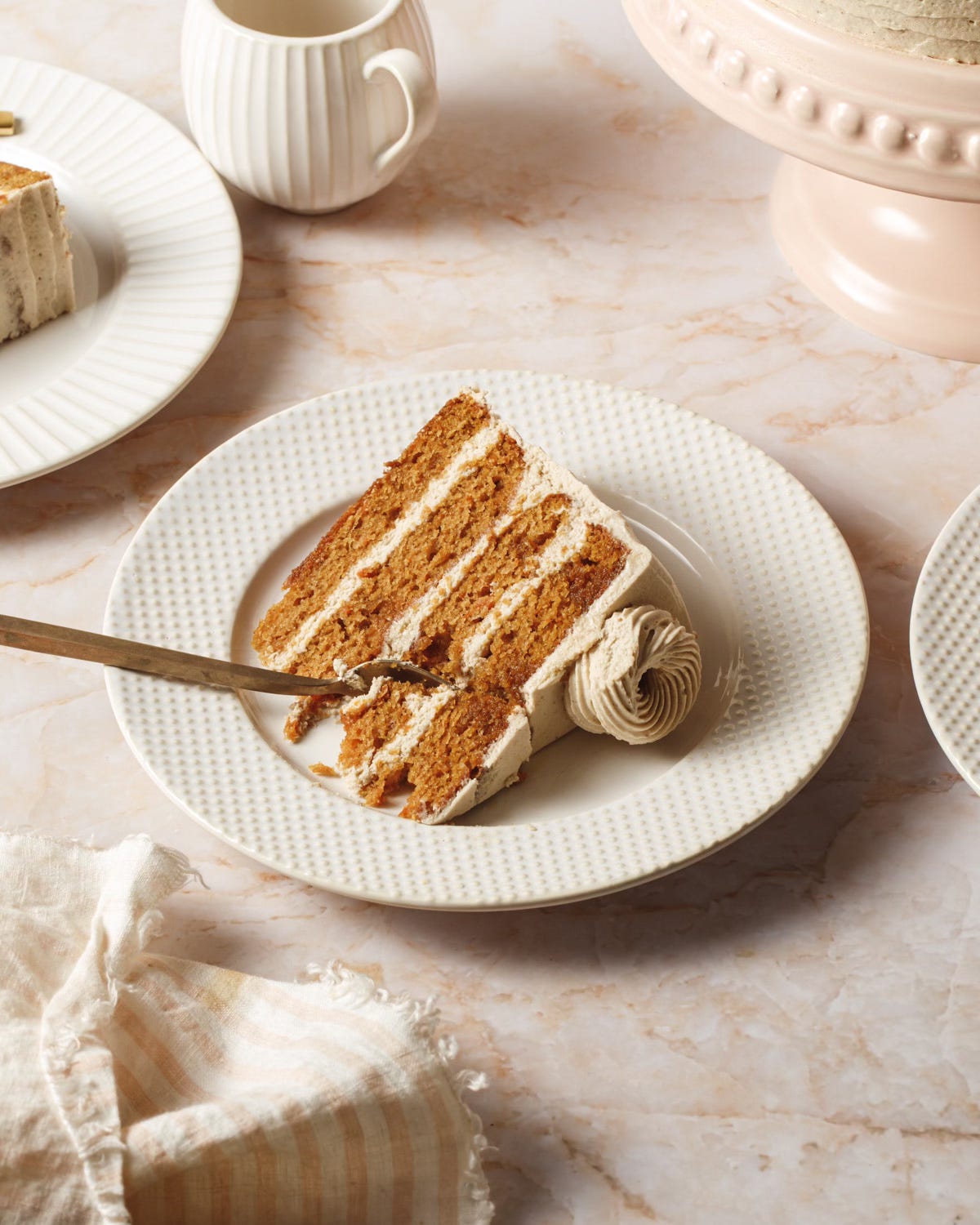Baker’s Notes:
Succulent, caramelized sweet potatoes; not-too-sweet frosting
Festive fall vibes; maple drizzle
Hi Bakers!
This new cake is so lovely that I wish it was my birthday this month so I could make it all over again. But isn’t that the real beauty of being an adult? It doesn’t even have to be your birthday to make yourself a celebration cake!
Whether your birthday is in November or not, I think you’ll love the combination of caramelized sweet potato, a not-too-sweet yet ultra creamy cinnamon brown sugar frosting, and a maple drizzle. It actually is my dad’s birthday later this month and he already gave this one two thumbs up. Happy Birthday, Dad!
Roasting sweet potatoes is an easy way to caramelize their naturally occurring sugars to infuse mega flavor into a cake. I worried it wouldn’t be dissimilar enough from my go-to canned pumpkin, but I was pleasantly surprised. I couldn’t believe how sweet the mash was before adding it to the cake; leftovers were easily eaten with a spoon.
My goal was to make a brown sugar frosting that has a smooth and creamy texture without the graininess. Ermine frosting is an easy option for when you want a flavorful, not-too-sweet frosting. I love the silkiness of a meringue-based buttercream, but they can be a bit fussy and hard to infuse with flavor.
Ermine frosting, or ‘cooked flour’ frosting, starts with a pudding-like, eggless custard that is later whipped with softened butter. The brown sugar cooks with milk and flour to ‘melt’ before adding to the butter along with cinnamon and a dash of vanilla.
Since Ermine isn’t very sugary, the drizzle of maple syrup adds flavor without the cake being overwhelmingly sweet. I piped frosting on top with a star tip to make a little pool for the syrup. In reality, it worked out only okay with a few leaking and dripping down the cake, but I honestly wasn’t mad about it. Still so pretty! Look for a pure maple syrup.
Tips and Troubleshooting for Ermine Frosting:
The key to smooth Ermine frosting is temperature control. The custardy base and butter should both be room temperature when whipped together. For best results, use right after mixing.
If the frosting feels heavy and thick then it is likely too cold and has not had enough time to mix. It should be weightless and silky, but not greasy. You may gently warm the frosting using a double-boiler or by microwaving a very small amount and mixing it back in until smooth and spreadable.
If the frosting is too soft to spread and slips off the cake, then it is likely too warm. Try placing the frosting in the refrigerator for 10 to 15 minutes, then re-mixing until smooth and spreadable.
If you notice that your frosting has changed texture over the course of assembling the cake, remix it before adding the final coat. That might be chilling it if it’s too soft or even melting a small portion and whipping it all together if you feel the frosting stiffening too much.
Keep reading with a 7-day free trial
Subscribe to Tessa Huff's Bake Club to keep reading this post and get 7 days of free access to the full post archives.







